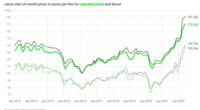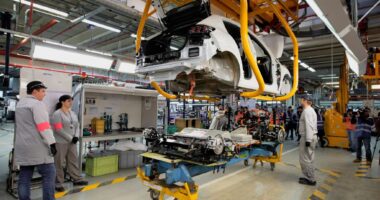The like-for-like price of a used car has risen almost 30% in the past 12 months, according to new data.
Compiled by Auto Trader Price Index (RPI), it marks the 26th consecutive month of year-on-year and like-for-like price growth in the used car market.
Last month, the like-for-like price of a used car was 28.4% higher than a year earlier, although May’s growth was just below April’s record 32.2% annual increase.
Data also shows prices for premium brands growing at a slower rate than volume brands, with demand for vehicles over five-years-old declining for the first time since February 2021.
Auto Trader’s analysis indicates a gradual return to a “normal” market rather than a dramatic fall-off in car prices as the industry works through the supply chain pressures which have held back production, despite the rising pressure on consumers from inflation being at a 40-year high.
It expects these pressures to last into 2023, exacerbated by the war in Ukraine disrupting the supply of some parts.
Against the backdrop of higher used car prices, retailers are also cutting prices of used vehicles by lower amounts than before the pandemic, according to marketplace data – which suggests the bubble won’t burst anytime soon.
Commenting on May’s performance, Richard Walker, Auto Trader’s Director of Data and Insights, said: “It is important not to jump to rash conclusions about the health of the market, despite the softening in used car price growth during May.
“If we compare it with a boom in car-buying after the end of the third lockdown, it is unsurprising that the market might seem weaker. But judged by site visits to Auto Trader which are currently averaging 63 million a month, demand is still solid and looks likely to support pricing for some time to come.
“This is obviously a tough time for consumers and there are further economic hardships to come,” he added.
“But the supply chain issues triggered by Covid and its aftermath mean that there are around two million fewer cars in the market than would have typically been the case – and the problem has been worsened by the crisis in Ukraine. This is a market which is only going to gradually return to normal.”









